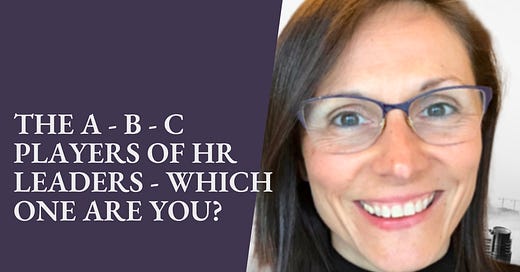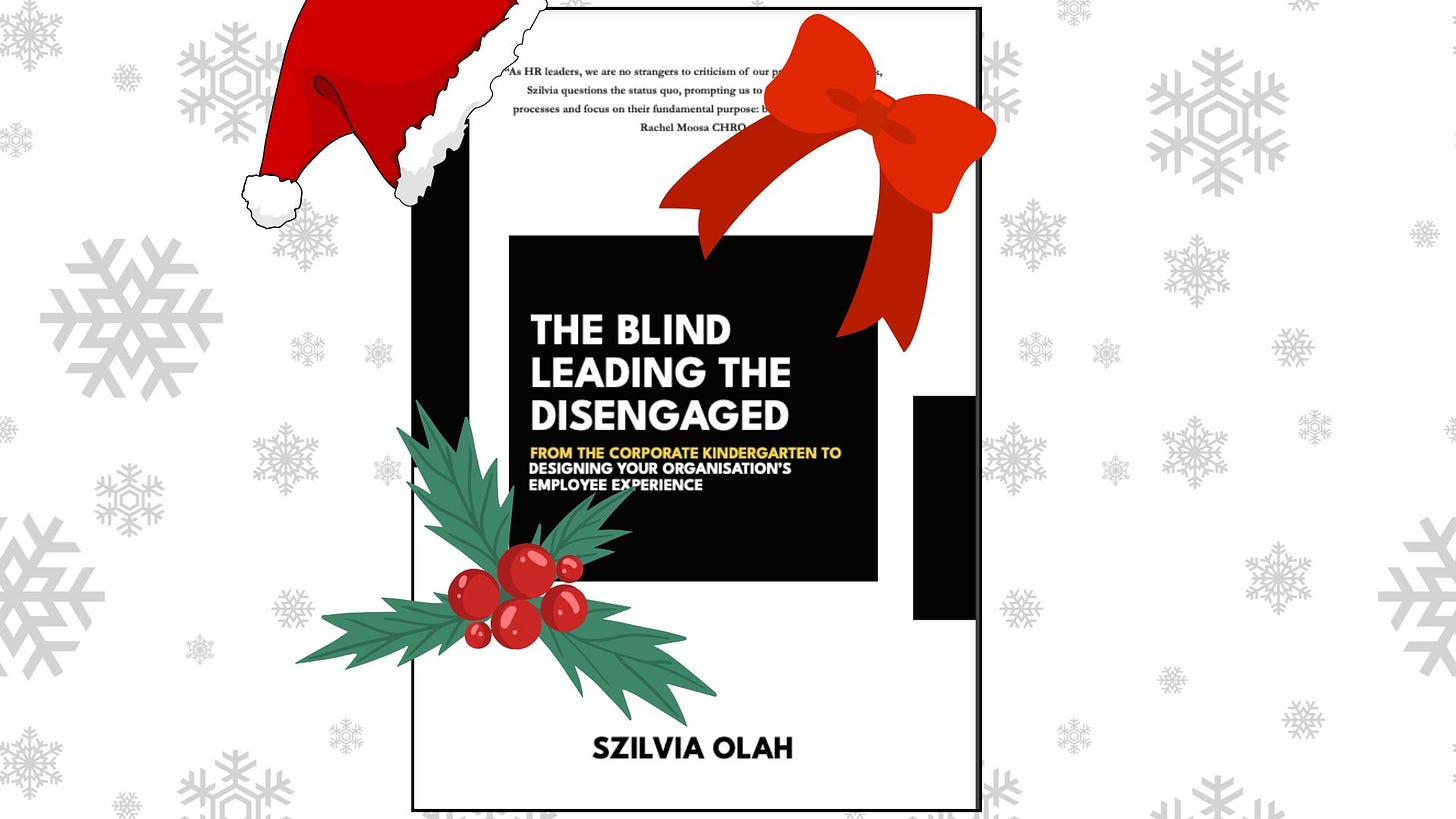If you're a senior leader looking to hire a new HR professional, it's crucial to consider what you need from them. Are you seeking fresh ideas, transformative change, and a complete overhaul of HR practices, or do you simply want to maintain the status quo and ensure processes run smoothly? Are you open for them to take risks with new unproven untried practices or do you want them to play it safe? Your answer will determine the type of HR leader you should hire.
This framework can also help HR leaders assess their current position and make adjustments as needed. It might even reveal that you’re in the wrong role or organisation.
"How would you rate my Head of HR?" That was the question I got from a CEO this year, and here is how I answered it. Look, every company has A, B, and C players. In leadership roles and HR, it looks like this:
'C' Players - Don't Hire them; if you inherit one, fire them ASAP. 🙁
'C' players are the ones who aren't doing the job and, as a result, may even harm the company financially or reputation-wise. The company lacks processes and data and the person is highly incompetent. They have no good reputation or relationships within the business. They are not up to date with trends and data and get very uneasy about change.
'B' Players - are the followers of A - Players. Keep them at bay! 😐
'B' players are the followers of A-players. B players are the ones who run processes and know how to do the job and maintain the status quo. They play it safe by using commonly adopted practices even if they don’t work. They have a traditional mindset about HR and cannot see organisations without traditional practices. They are up to date with trends and what's happening within the industry and follow others. B players are the most misleading because they come across as highly competent and as A players, but in fact, they just follow the lead of A players. They say what everyone else is saying, do what others are doing and jump on every bandwagon. Most of the time, they are extremely well branded, appearing at every conference and magazine cover, getting all the paid awards but when you listen, they say nothing of substance or original and just regurgitate everything they hear and read. They implement social agendas without considering the two major questions 'A' players ask. They also tend to be those who talk about ideas that are not implemented in their organisation. Therefore, their professional integrity is in question. ‘B’ players are likely to bring in external consultants because they don’t have what it takes to make changes but they want to be seen as they do.
'A' Players - are the individual thinkers, experts in the field, and thought leaders. They can think for themselves. 😃
'A' players are the ones who know how to do the job, and they follow nobody. They are the Google of HR practices. They are aware of trends, data, and interventions and can analyse them. They ask two questions: Do my people need or want this? Does my business need this? If the answer is no, they abandon the idea and have a rational explanation for it. If the answer is yes, they can adjust interventions (using their high level of expertise and creativity) based on their unique circumstances. They don't follow trends and practices blindly but scrutinise them and see if they are relevant for their organisation and people. They know you cannot copy-paste "best practices" because every organisation differs. They set HR trends and develop ideas that B players follow (without thinking). But they don’t just come up with ideas; they can implement them, too. That is hard and a must to be an 'A' player. That's why you see VERY few, so the likelihood of having or being one is low. Most of the time, those few 'A' players go under the radar because they are unlikely to parade themselves around. They are quietly working away for their business and people.
Take a moment before the year ends to ask yourself: Am I truly transforming this (HR) department, or am I just patching things up without making real change (C & B players)? Would I be proud to showcase my practices, policies, and processes to other companies? Would I be offering the same tired solutions as everyone else (B players), or would I be the Google of HR in that room, setting the standard for everyone else (A players)? The real question is always; How much of what you’ve done actually makes a difference? This is what decides whether you are a C - B or an A player.
PS: I’ve made some terrible mistakes in my career, misjudging B players as highly competent. But when I started paying closer attention to what they were saying, doing, and achieving—and especially what they confided in me outside of work about their struggles to get the job done—it became clear. Sadly, this realization also meant that people I once admired and looked up to had to be reevaluated and downgraded from A players to B players.
B players are incredible teachers when you’re still learning and not yet competent. They’re the ones you look up to during that phase. But if you want to grow and reach the level of A players, you have to leave the B players behind - in every field, not just in HR. If you are ready to grow, don’t stick with them just because they gave you so much and you feel bad about outgrowing them. Say thank you and move on! They served their purpose in your journey.
Don’t forget to grab my book, The Blind Leading the Disengaged, for free until the 31st of December. It is my way of calling out the corporate chaos and offering a path toward better employee experiences.
I hope it brings a smile, a nod, or even a new idea to take into the New Year. Wishing all of you a healthy and prosperous 2025!
Download for free and with no email. Go to my website and download it. Enjoy!
https://www.thestrengthscompany.com/
Stop with the LinkedIn applications! 🛠️ Gen Z & Millennial Career Alternatives





